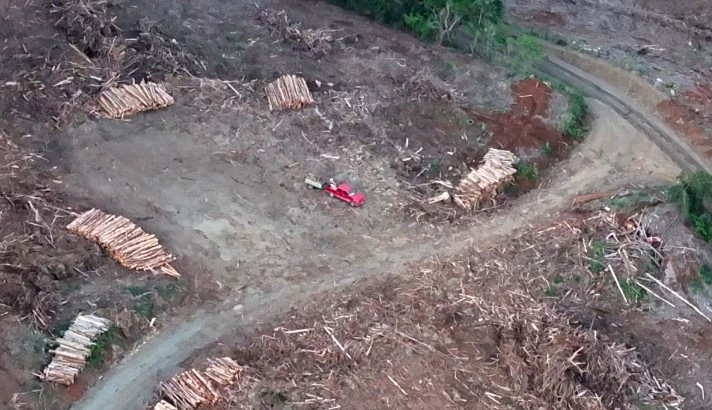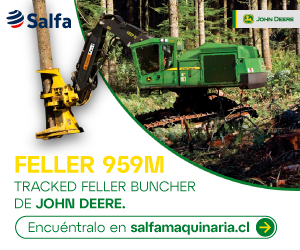Forestry sector gives positive assessment of wood packaging regulation 20 years after its implementation
Representatives of the forestry sector gave a positive evaluation of the International Standard for Phytosanitary Measures – ISPM No. 15 during the in-person Regional Roundtable organized by the Agricultural and Livestock Service (SAG) of Biobío, following the virtual seminar "20 Years Since the Implementation of ISPM No. 15," held at the CMPC auditorium in Los Ángeles. The event addressed the early stages of its implementation, sector challenges, main reasons for port rejections, interceptions detected in the region, and other relevant topics.
Regarding this, the regional director of SAG Biobío, Roberto Ferrada, highlighted that "we’ve had a very productive meeting, covering all regulatory, procedural, and normative aspects, as well as all the interceptions we’ve achieved as SAG under this standard. It also addressed the implications for foreign trade, especially for forestry product exports that comply with this international standard to demanding markets like Europe, North America, and Asia."
He added that ISPM No. 15 regulates wood packaging used in international trade and was implemented in Chile 20 years ago through SAG Resolution No. 133 of 2005 and its amendments (Resolution 7008 of 2013). The standard requires wood packaging to undergo phytosanitary treatment and bear its respective mark, in addition to being free of insects. If live insects (eggs, larvae, pupae, or adults) or signs of live insects, such as wood shavings or sawdust from imported wood packaging, are detected, it must be reported to thenearest SAG office
Meanwhile, the manager of CPF SA, Claudio Goycolea, stated that "Chile was one of the promoters of this regulation, the third country to implement it. It has helped reduce the entry of forest pests, allowing the forestry industry to continue operating without issues, as pests in many countries have made it impossible to produce certain species. In this regard, we must continue strengthening efforts to improve the detection of pests attempting to enter Chile."
In this context, the manager of CORMA Biobío – Ñuble, Margarita Celis, noted that "this is a crucial opportunity for public-private collaboration, as it allows us to stay updated, understand SAG’s control and inspection processes, and address critical issues like wood material for exports, the entry of quarantine pests, and all necessary measures to safeguard our phytosanitary heritage."
Meanwhile, the Regional Minister of Agriculture, Pamela Gatti, emphasized that "the Agricultural and Livestock Service plays a fundamental role in the International Standard for Phytosanitary Measures – ISPM No. 15, which involves control and inspection processes to intercept pests, implementing respective phytosanitary measures to prevent their entry into national territory. This ensures proper management of forestry product exports."
Over the years, 247 live pests associated with wood packaging have been detected in the Biobío region, either at ports or destinations, leading to phytosanitary measures as defined by SAG. In 2024, 3,845 batches of wood packaging were inspected, with 8 live pests intercepted, while in 2023, 3,668 batches were inspected, resulting in 15 live pest interceptions.
Wood packaging
Wood packaging—used to secure, protect, or transport products in international trade—serves as a means to transport pests from one place to another. Most of it is made of raw, low-quality wood (discarded wood) that has not undergone phytosanitary treatment to eliminate/destroy pests, making it a significant pathway for their entry and spread, causing serious harm to the country’s phytosanitary heritage.
Among the measures wood packaging must comply with are the use of debarked wood for its construction and the application of phytosanitary treatments, such as heat treatment or methyl bromide fumigation, to prevent pest infestation. Additionally, wood packaging must enter the country with an internationally recognized mark certifying the treatment applied. Regulated wood packaging includes pallets, bins, grates, frames, cages, skids, boxes, crates, tie bins, reels, and others.

















